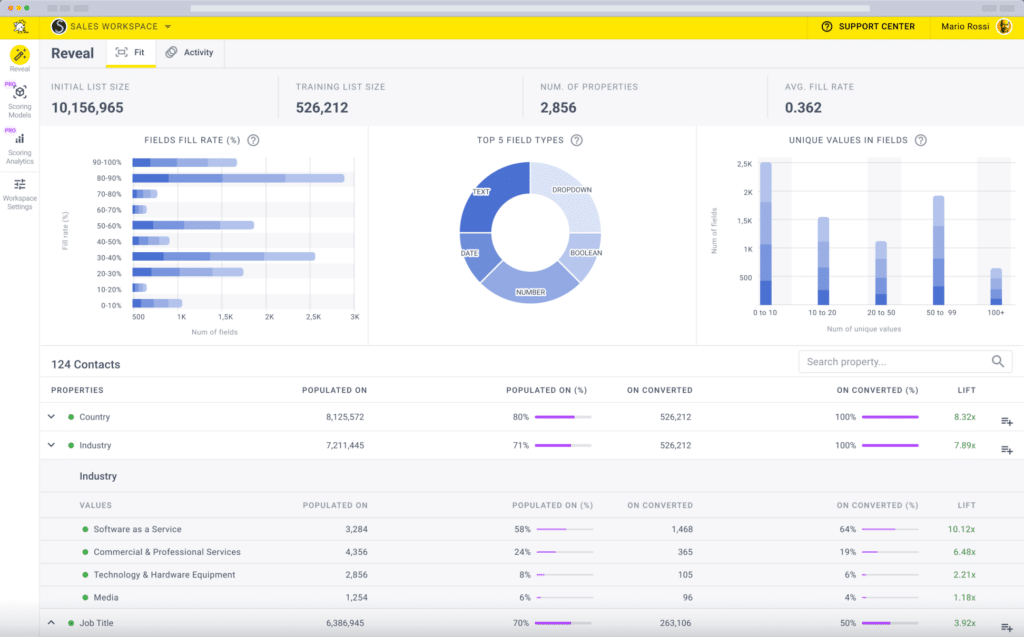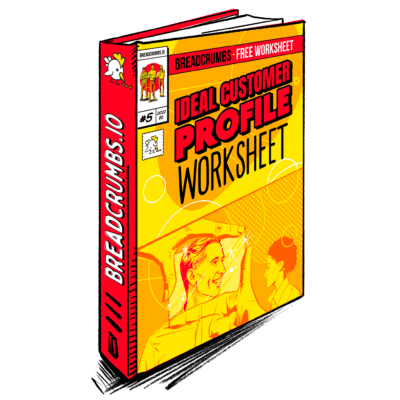When creating a business, all founders come to an all-important fork in the road. It’s a decision that, once made, lays out a specific path to inform not only your customer journey but your marketing strategy, retention, and development efforts.
That decision is whether you’ll be a product-driven business or a customer-driven business.
These two tenets can help a new company develop its voice by determining where its overall focus lies.
For example, will you focus mostly on the product itself? Can you hype a slew of fantastic features that are sure to elicit Fear Of Missing Out (FOMO) in your audience?
Or will you focus on that audience—centering your entire company around your potential customers’ wants, needs, and solutions to their overall pain points?
To make the best possible decision, you’ll first need to understand what it means to be product-driven vs. customer-driven and the critical differences between the two.
In this article, we’ll explore both definitions. We’ll also review product-driven examples, and customer-driven examples, as well as walk you through five key differences that can affect how you reach potential customers.
Let’s take a look.
What is a customer-driven business?
A customer-driven business puts the customer and their needs first.
When someone develops a product or service for a customer-driven business model, it’s often to address a specific need. In this case, you’ll choose a particular audience and fill a void in the market.
That typically involves a slew of customer research, such as data on your target demographic, their specific customer pain points, their marketing preferences, and competitor analysis.
So, if you’re going to choose a customer-driven business over a product-driven one, you’ll need a strong, data-backed Ideal Customer Profile (ICP) to inform your overall strategy. Luckily for you, we’ve got you covered!
A free Breadcrumbs account comes with Reveal, and you instantly get access to the attributes that make up your data-driven ICP based on your best customers (or any customer segments), plus the actions that predict a higher buying intent (or any conversions, such as upsell or cross-sell).

Entrepreneurs developing a customer-driven business will say, “Here’s an existing problem without a viable or affordable solution. How can we solve it?”
Here’s an example to demonstrate what we mean:
Form Health is a business that helps clients focus on how to shape a healthier future that saw a significant gap in the health and wellness market: generic, one-size-fits-all solutions.
So, Form Health stepped in to provide a more personalized approach (backed by science) to help clients achieve their personal wellness goals. How? Through regular telehealth visits, access to Registered Dieticians, and a dedicated team to support clients around the clock.
By focusing on each client’s personal health journey and transformation, Form Health has solved this major pain point. And the best part? They built the business around a mission to help people feel better in their own skin.
But that doesn’t mean all customer-centric businesses are service-based. Many companies that develop products also do this with the customer in mind first.
For instance, Samsung is typically the first to roll out new popular smart device features with its customer-centric approach.
Samsung has a particular target audience in mind and is constantly studying them. In other words, they continually gather customer data to determine what they want and how to deliver it.
What is a product-driven business?
A product-driven business follows a straightforward two-step development process. First, you develop a product based on product research and then find an audience that wants it.
As the name suggests, you’re leading with the product, focusing more on its features and the luxury or benefits it can provide. When a product is developed for one of these businesses, there’s not a lot of talk about a target audience or the market in general. There’s simply an idea for a creative and product dedicated development team to bring its product strategy to life.
In the world of product-driven companies, the product is like the sun, with all of the company’s other departments revolving around it. For example, the marketing team focuses entirely on showcasing the product and creating awareness around it.
An excellent example of a product-driven company would be Sony, with its PlayStation video game console.
Sony developed The PlayStation 5 as a product that could be marketed to a vast audience.
Of course, you have gamers who appreciate the stellar graphics, haptic feedback controller, and online gaming features. But the PlayStation is also a streaming device with an Ultra HD Blu-ray player. It can become the center of any modern living room, regardless of video game preferences.
Sony developed the PlayStation 5, put it on the market, centered all messaging around the product, and attracted an interested audience.
Another tremendous example of an utterly product-driven company is Apple.
Apple leads with its features when creating products like cell phones, tablets, computers, streaming devices, and more.
The products developed by Apple have changed the face of the tech world.
The iPhone and iPad pioneered the modern smart devices we use today. Apple didn’t think about the market or a target audience immediately. Instead, Steve Jobs developed products with broad appeal that created a buzz worldwide.
5 differences between product-driven businesses and customer-driven businesses
Here are some of the top differences between product-driven businesses and customer-driven businesses.
1. Emphasis
The main difference between product-driven and customer-driven businesses is where the emphasis is placed—which is either on the product or the customer.
For instance, Clean Origin, a company that sells ethically sourced engagement rings made with lab-grown diamonds, is an example of a product-driven business. Its focus is on creating a superior product.
The company invests heavily in research and development. This guarantees its lab-grown diamonds are of the highest quality and provide unique benefits (such as the peace of mind that the stones are conflict-free) compared to traditional diamonds.
Hims & Hers, on the other hand, is a customer-driven business. It focuses on understanding its target customers’ needs and desires and creating products that meet those needs. For example, its minoxidil for women responds to its female customers’ specific hair loss concerns.
Both approaches have their advantages and disadvantages. Product-driven businesses may have a competitive advantage in the quality of their product.
In contrast, customer-driven businesses may better understand their target market. They’re also more agile in responding to changing customer needs.
2. Development
Another area where these two business models differ is in their development.
When developing a product-driven approach, whether creating physical or digital products, you’ll need to put a lot of emphasis on your:
- Product features
- Product decisions
- Product roadmap
- Product rollout
Developing a customer-driven business requires much more thought into key areas.
First, you have your customer demographic information, including essential data to construct buyer personas, such as your target audience’s average:
- Age
- Interests
- Geographic area
- Gender
- Occupation
- Marketing preferences
- Marketing platforms
- Pain points
- And more.
Or, if you’re targeting businesses, you’ll need to take a close look at their firmographic data.

Ebook
Ideal Customer Profile (ICP) Worksheet
Learn how to create an Ideal Customer Profile and build a successful sales strategy with this Ideal Customer Profile (ICP) Worksheet.
You also need to examine the market closely. That means paying careful attention to things like:
- Competitor field
- Competitor messaging
- Oversaturation
- Differences between your approach and your competitors’
- Competitor success metrics
- Competitor audience
TL;DR: When developing a product-driven business, the focus is entirely on the product. But when you’re considering customers, the focus is on them and their core needs—that means you’ll need to design your company and products to center around that group and what it’s looking for.
3. Customer relationships
Regarding a customer-driven business, a lot of effort goes into forging customer relationships and retaining business over time through loyalty.
For instance, Dentfix, which specializes in offering high-quality dental treatment in Turkey, is an excellent example of how a customer-driven business establishes these relationships.
Dentfix provides many dental procedures, including cosmetic dentistry and implantology, while keeping patients comfortable and informed throughout their treatment. As a result, they’ve developed a devoted customer base and established themselves as a top choice for patients.
You can see in the image above how Dentfix forges these relationships. It’s all about the customer and their smile. That matters to the customer, so Dentfix shows that it also matters to the company. Delivering its services takes a “we’re in this together” mentality.
Dentfix’s website is also chocked full of help center articles personalized to its audience to help aspiring patients understand its dental procedures in detail. This alleviates their fears and concerns as they research medical tourism options for their dental needs.
Now, take a look at how Apple creates relationships on its website.
In the image above, Apple focuses on the product. It’s hyping features and showing the customer what the product can do for them.
A company like Apple inspires loyalty through quality. The Apple name has an excellent reputation meaning quality advanced products that make life easier for many people. At this point, it doesn’t have to create a relationship between the customer and the company. The true relationship is between the customer and its products.
4. Marketing
Finally, you have marketing. Customer-driven businesses that aim to build successful digital marketing strategies put a lot of effort into market research. The demographics we discussed inform the customer-driven marketing plan.
Its messaging centers around the customer experience and pain points. When marketing a company like this, you must show how your offering will make a positive difference in a customer’s life.
On the other hand, when marketing a product-driven enterprise, focus on your product’s quality, its features, and how people use it. Something like an iPad or a PlayStation isn’t resolving some major need, so you don’t have any heartstrings to pull on.
That’s why marketing materials need to show the product in action, dive into its features (and benefits), and create value related to the price.
5. Decision-making
Product-driven businesses tend to make decisions based on internal factors such as product capabilities, technological advancements, and market trends.
Customer-driven businesses consider customer insights, feedback, and preferences when utilizing estimate templates. By incorporating customer input into the estimate template, businesses can ensure that their offerings align with customer expectations and deliver value.
This customer-centric approach allows customization and flexibility within the estimate template, empowering customers to make decisions that best suit their needs and preferences.
Wrap up
Whether you’re running a customer-driven or product-driven business, you can extend your reach simply by understanding your approach and the differences between these two models.
Remember that in a customer-driven approach, you’ll need to evaluate and score leads in your target audience to target prospects with the best chance of converting.
That’s where Breadcrumbs comes in.
Breadcrumbs takes the sweat and tears out of lead scoring so you can focus on growing your business! Ready to see how it works? Request your free Breadcrumbs demo, today.










